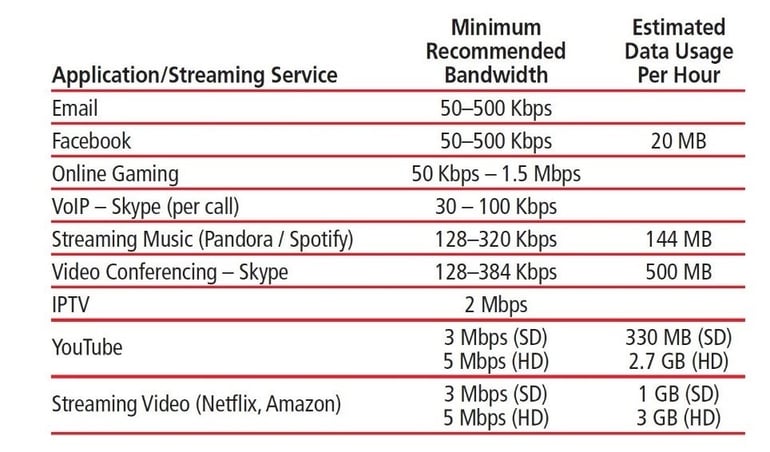Customers have options when it comes to their networks. Cost, download and upload speed, reliability and application all factor into prioritizing elements in a configuration. Customers can work with companies like SpeedCast to best determine personal bandwidth needs for optimal performance.
Bandwidth 101
Bandwidth is the volume at which data is transmitted, and the higher the bandwidth, the more data that is simultaneously transferred. Expressed as kilobits per second (Kbps), megabits per second (Mbps) or gigabits per second (Gbps), rates are listed typically in the satellite industry as “bandwidth of traffic going to the customer/bandwidth of traffic leaving the customer” (e.g. 512/128 Kbps). This would mean that you are communicating at a 512 Kbps receipt speed and a 128 Kbps transmit speed.
File size, on the other hand, is shown in bytes (8 bytes are in 1 bit). Typical files sizes are measured in kilobytes (1,000 bytes), megabytes (1 million bytes), gigabytes (1 billion bytes) and terabytes (1 trillion bytes). The larger the file, the more bandwidth is needed to transmit.
For normal applications, here is a look at some of the bandwidth recommendations per user:
 What type of service do you need?
What type of service do you need?
When a customer is making a decision on whether they’re better off choosing a shared or a dedicated network, it’s best to determine how to maximize resources while covering their top priority. Shared networks are allocated across multiple users or sites – working off the premise that only a percentage of users are likely using the bandwidth simultaneously. Here, the cost can be shared among multiple people and therefore is the best option for saving money. If the priority lies more with performance or reliability of the network, a dedicated option is likely more appropriate since all bandwidth is guaranteed to be available when the user needs it. Latency is not a factor, however, paying for dedicated bandwidth tends to be more costly.
To best assess and ensure a customer’s needs are being met consistently, a metric called Committed Information Rate (CIR) is typically used by satellite providers. This represents the level of bandwidth that is promised to a customer, which is a measure to ensure that they are receiving the level of service they expect and pay for. The level of provided bandwidth should never drop below the CIR at any time.
When determining bandwidth needs, be sure to ask a few questions prior to making a decision. How much of a factor is cost? How much data and which applications are likely to be streamed at a given time? Is it crucial to be as fast or as reliable as possible every time?
Since service providers are always finding new ways to design networks, customers should work with their providers to determine the best customized solution to fit their needs.
